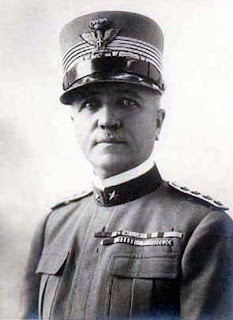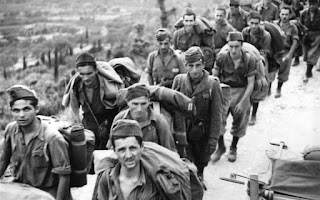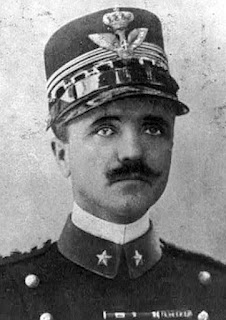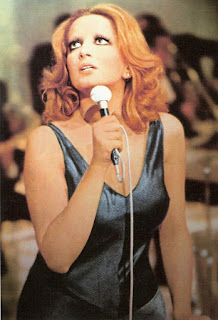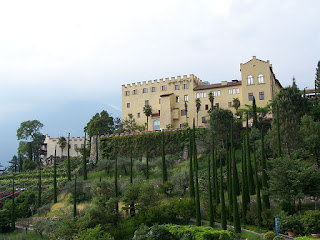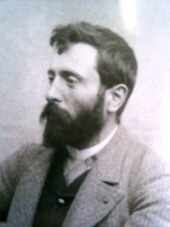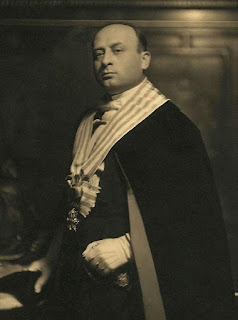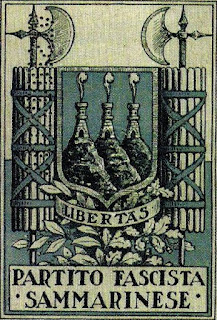Adriatic port liberated by Canadians at huge cost
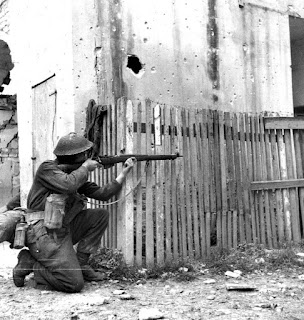 |
| The Battle of Ortona was characterised by close-quarter fighting among the ruins of destroyed buildings |
The Battle of Ortona and other confrontations close to the nearby Moro river, which encompassed the whole Christmas period, claimed almost 2,400 lives. It was characterised by brutal close-quarters fighting and is sometimes known as “the Italian Stalingrad”, partly because of the high number of casualties but also because of the backcloth of destroyed buildings and rubble.
Although the battalions of German paratroopers holding the strategic port were defeated, casualties on the Canadian side were greater, with 1,375 soldiers from the Canadian 1st Infantry Division killed and 964 wounded, against 867 Germans killed. In addition, more than 1,300 civilians died.
The Canadian deaths amounted to more than a quarter of their entire losses in the whole of the Italian Campaign, which spanned 22 months as Allied forces fought their way up the peninsula.
Ortona, in the Abruzzo region, had some strategic importance as one of the few usable deep water ports on the Adriatic coast and its capture would enable the Allies to dock supply ships as they sought to detain Adolf Hitler’s forces in a long campaign while preparations were under way for the D-Day invasion of the following year.
 |
| Fighting among the rubble lasted for eight days |
When the initial attack on the town took place near the Moro river south of Ortona on December 20, Allied commanders under Major General Chris Vokes are said to have expected it to be a relatively minor battle.
But Hitler had ordered his troops to defend Ortona with their lives and they prepared by blocking all but the main street of the town with piles of rubble, among which they set booby traps and placed machine-gun and anti-tank emplacements in concealed positions. It meant that progress for the invading infantry and armoured vehicles was extremely difficult.
As a response, the Canadians deployed a tactic that became known as “mouse-holing”, by which they advanced through entire blocks of buildings by blowing holes in external and internal walls, clearing their path with machine gun fire and grenades.
Although the tactic sometimes resulted in heavy Canadian casualties, it worked inasmuch as they were able to drive the enemy back through the town without exposing themselves to ambush on the open streets.
 |
| Soldiers enjoyed a Christmas dinner in the courtyard of the ruined church of Santa Maria di Constantinopoli |
For some, it would be a last meal. The following day, in particular, would be a bloody one, with 22 Canadians killed in one incident when a German booby trap caused a building to collapse, although the Canadians responded by killing around 50 Germans in a near-identical revenge attack.
On the evening of December 27, aware that the Allied forces on the ground were to be joined by airborne support the day after, the German commanders were ordered to save their remaining troops and withdraw. The Canadian soldiers claimed control of the town the following morning.
Although the operation was a success, as part of a month that would be remembered as "Bloody December" by Canadian forces it has been judged in history as a victory achieved at a heavy cost. Some historians minimise the significance of the battle because it could not be said to have been a major factor in winning the war.
 |
| The Price of Peace memorial in the Piazza Plebiscito in the centre of Ortona |
In November 2000, the Canadian government erected a plaque in the same location in recognition of the battle as a National Historic Event of Canada that "symbolised the efforts of the Canadian Army in the Italian Campaign during World War II" and praised the “extraordinary courage” of the soldiers who took part.
 |
| The restored Castello Aragonese is one of the main sights in the Adriatic port of Ortona |
Ortona, which can be found about 22km (14 miles) south of Pescara along the Adriatic coast and about 26km (16 miles) east of the provincial capital Chieti, is dominated by a huge 15th century Aragonese castle, a legacy of another major battle when Ortona came under heavy attack by the Venetian navy in 1447. The castle has been renovated and visitors can reach it by walking along the Passegiatta Orientale, which looks out over the coastline. Ortona’s Cathedral of Saint Thomas contains remains of Saint Thomas the Apostle, which were brought to Ortona by sea in the 13th century more than 1,200 years after his death in India. The town also has a museum dedicated to the 1943 battle.
 |
| The Moro River Canadian War Cemetery contains the graves of 1,615 soldiers, mainly killed in the Battle of Ortona |
The Moro River Canadian War Cemetery can be found at San Donato, about 5km (3 miles) south of Ortona. The site was selected by the Canadian corps of the Allied forces in January 1944, in the weeks following the bloody Battle of Ortona, intending that it would contain the graves of those who died during the Ortona battle and in the fighting in the vicinity in the weeks before and after. Of the 1,615 graves in the cemetery, more than 50 are unidentified.
Also on this day:
1503: The death of Medici ruler Piero the Unfortunate
1850: The birth of operatic tenor Francesco Tamagno
1908: Messina and Reggio Calabria hit by Italy's worst earthquake
1947: The death of King Victor Emmanuel III
Home









